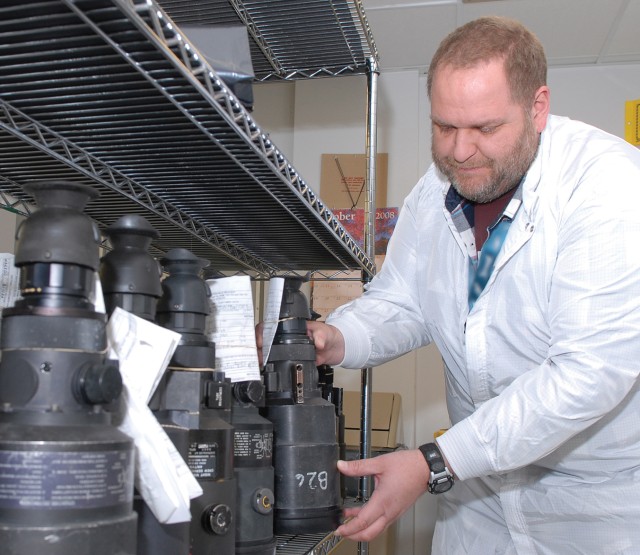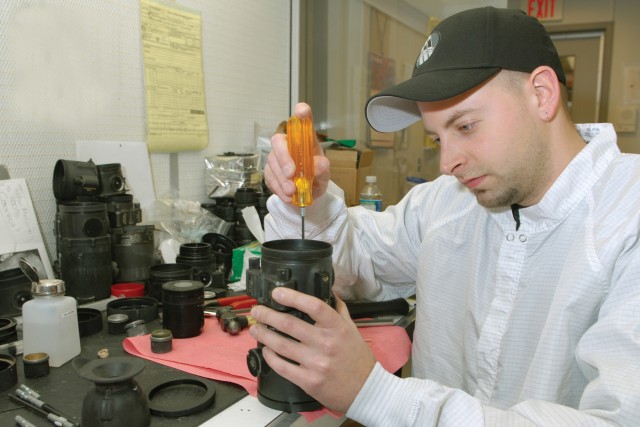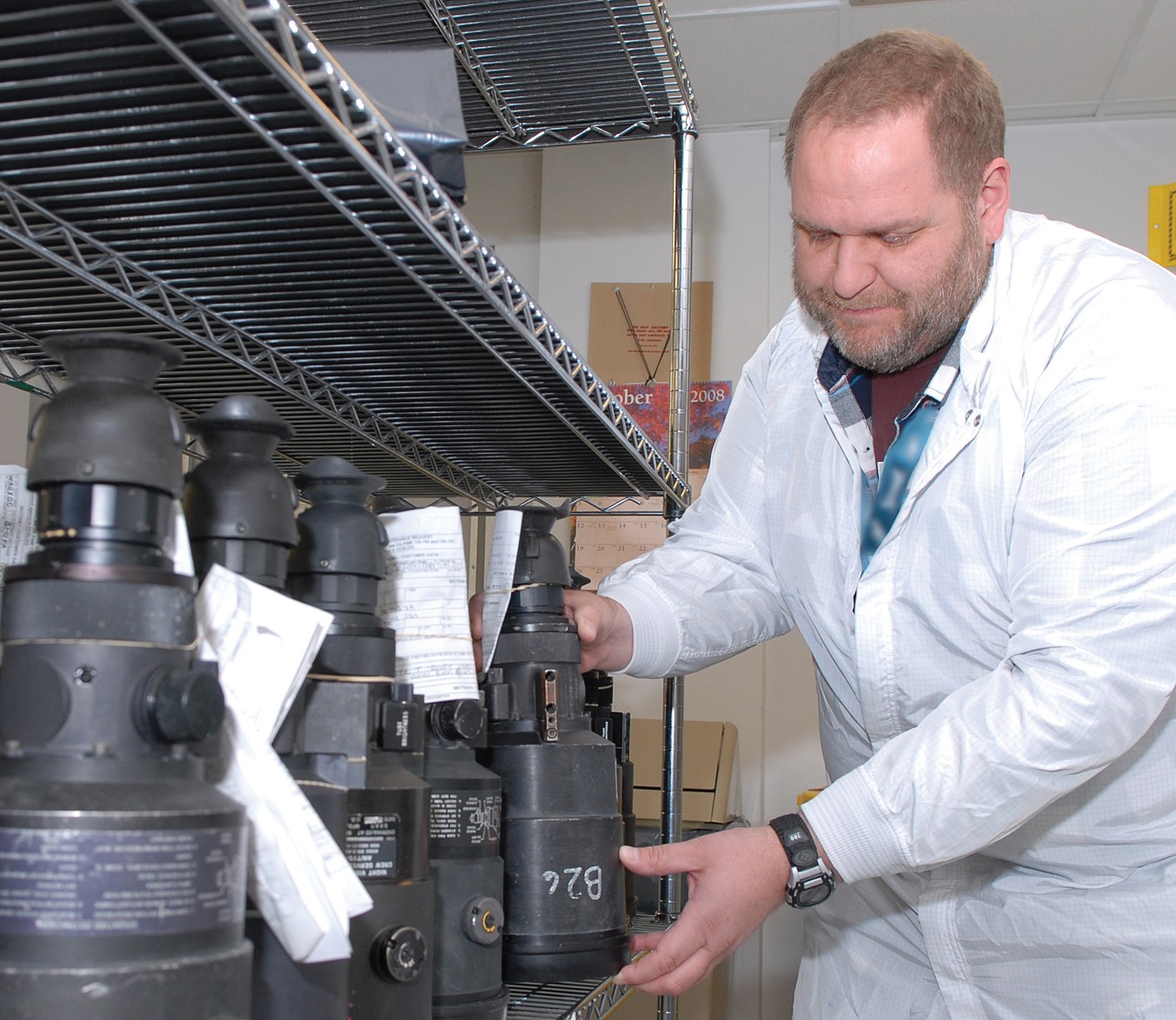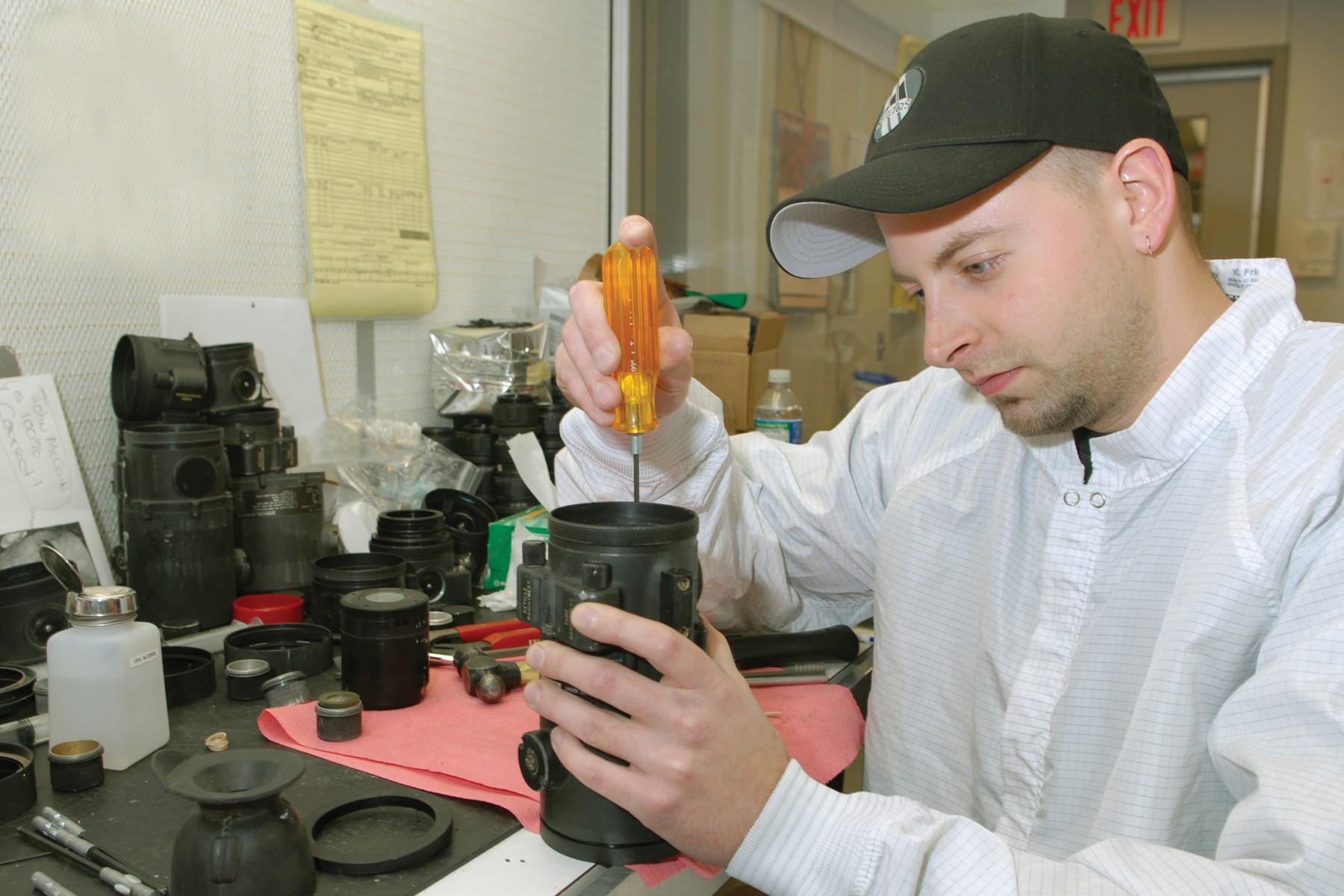TOBYHANNA ARMY DEPOT, Pa. - Tobyhanna technicians earned accolades for repairing thousands of night vision goggles during a five-week, temporary-duty assignment to Fort Lewis, Wash.
Soldiers returning from deployment turned to 11 technicians supporting the Communications Electronics Evaluation Repair Team to Reset 2,546 monocular-style goggles-AN/PVS-14-belonging to the 4th Brigade, 2nd Infantry Division (Stryker). Certificates of Appreciation were presented to team members Oct. 20. The team made the repairs from Sept. 8 to Oct. 10.
"We were very pleased by the support we received from the CEER-T," said Chief Warrant Officer Jeffery Heil, Reset coordinator for the Fort Lewis-based unit. "They were very professional and competent."
The team worked out of pre-positioned conexes to repair or replace damaged components. The maintenance conexes contain test equipment to support the assigned missions and the supply conexes house spare parts needed to support repair. The conexes, provided by the U.S. Army CECOM Life Cycle Management Command, are staged at Tobyhanna until a requirement is generated by a customer.
"CEER-T works hard to get assets back to the Soldier," said Sean Weir, electronics worker, explaining that the team worked 12-hour days making sure the goggles functioned properly. "We spent a lot of time breaking goggles down, performing repairs and rebuilding them." Weir is assigned to the Laser/Image Optics Branch, Electro Optics/Night Vision Division. The division is part of the Intelligence, Surveillance and Reconnaissance Directorate.
Technicians repaired components such as gaskets and defective optical instruments, tested image intensifier tubes and replaced battery housings. Whatever was damaged, the team repaired the asset to meet established standards.
"We performed optic and purge tests on the goggles," said Todd Costantino, electronics worker. He explained the purge test makes sure the gaskets are sealed tight.
Michael Marsh described how they pumped the goggles full of nitrogen to remove any moisture, a procedure that also prevents temperature changes in the goggles that can create moisture. Marsh is an electronics mechanic.
"The unit was very supportive," Marsh said. "They provided items that we needed such as nitrogen, as well as the electricity and heating, ventilation and air conditioning for the conex we worked in."
Sgt. 1st Class James Williams worked alongside the depot technicians providing necessary support during the TDY.
"Everyone provided stellar support to the brigade during the Reset," said Williams, noncommissioned officer in charge of the 202nd Brigade Support Battalion, Electronic Maintenance Shop. "From the advance team that started the packing and shipping, to the onsite work on the AN/PVS-14s by Tobyhanna, to the wrap up, we received unsurpassed support."
Williams remarked that the CEER-T showed "amazing" flexibility and adaptability in accomplishing the mission. In addition, technicians provided critical over-the-shoulder training and information on maintenance trends.
"The team was willing to work within our timeframe to get the night vision goggles back into the hands of the warfighter as quickly as possible," he said.
The unit also ensured the turn-in of equipment stayed on schedule.
"It was quite an eye-opening experience seeing Soldiers in uniform turning in the equipment they just used in a war zone" said Richard Quinn, noting that there were no delays and the TDY went smoothly." Quinn is the CEER-T project lead in the Production Management Directorate.
CEER-T is an effort to augment the directors of logistics at various installations in support of the Reset of Single Channel Ground and Air Radio Systems and night vision systems. DOLs would request support for SINCGARS and/or NVG. A team would be dispatched after a site visit to the DOL.
"Our teams are known for the quality of work they do," said Quinn. "Technicians are really good about keeping up the numbers and staying focused on the mission. They take pride in the fact that they are helping the country and the warfighter."
Other CEER-T members were: Bryan Deliman, John Duarte, Frank Hill, Jamie Jabara, Dave Jennings, Jeffrey Shuman, Robert Strohmaier, and George Stuffick.
Tobyhanna Army Depot is the largest full-service Command, Control, Communications, Computers, Intelligence, Surveillance, and Reconnaissance (C4ISR) maintenance and logistics support facility in the Department of Defense. Employees repair, overhaul and fabricate electronics systems and components, from tactical field radios to the ground terminals for the defense satellite communications network.
Tobyhanna's missions support all branches of the Armed Forces. The depot is the Army Center of Industrial and Technical Excellence for Communications-Electronics, Avionics, and Missile Guidance and Control Systems and the Air Force Technology Repair Center for ground communications and electronics.
About 5,700 personnel are employed at Tobyhanna, which is located in the Pocono Mountains of northeastern Pennsylvania.
Tobyhanna Army Depot is part of the U.S. Army CECOM Life Cycle Management Command. Headquartered at Fort Monmouth, N.J., the command's mission is to research, develop, acquire, field and sustain communications, command, control, computer, intelligence, electronic warfare and sensors capabilities for the Armed Forces.




Social Sharing